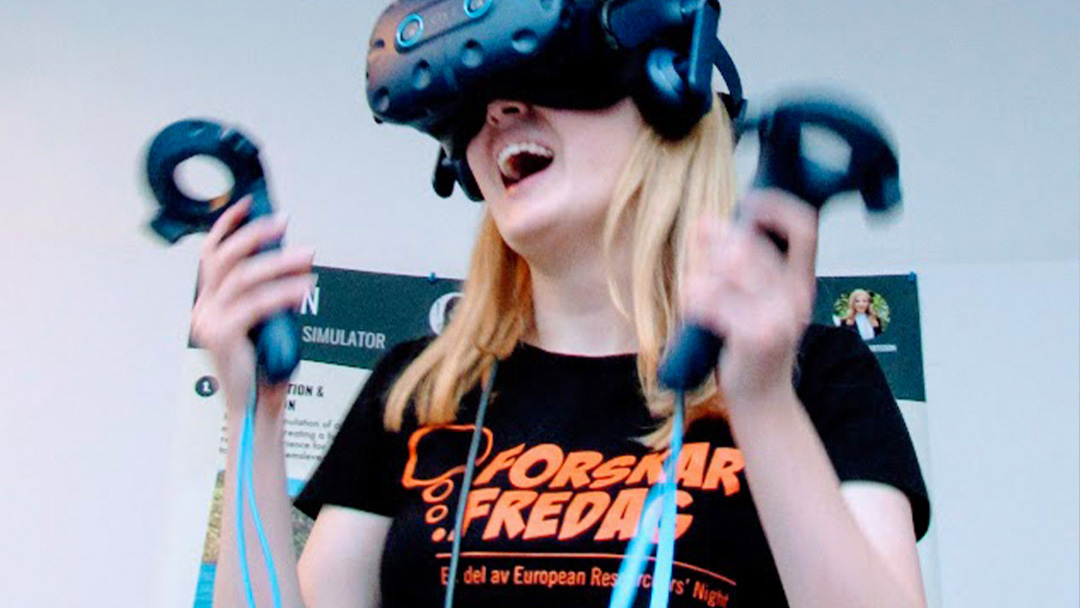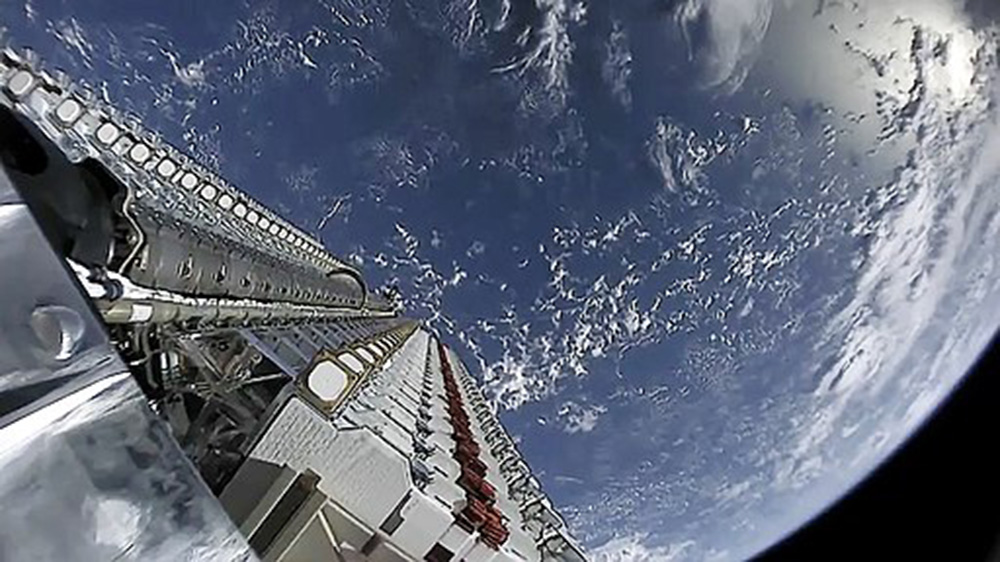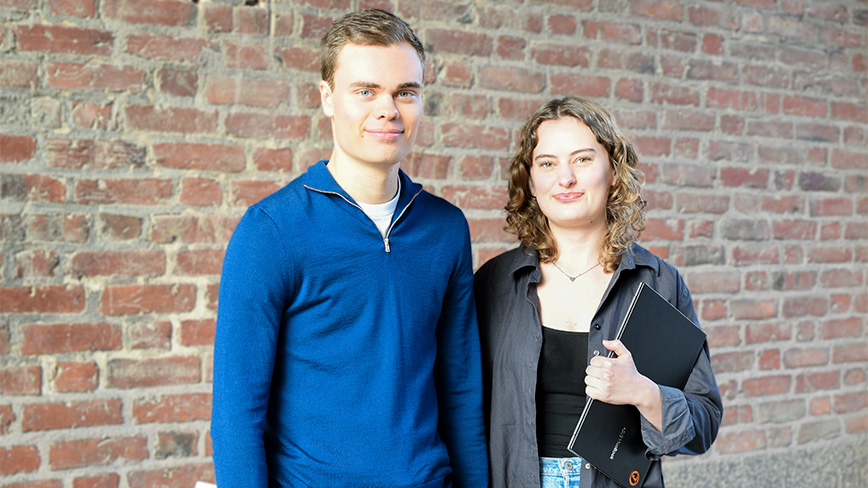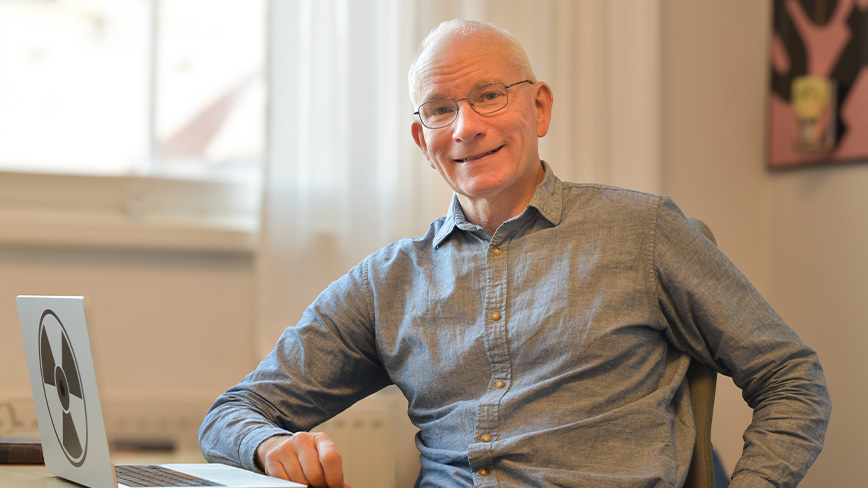This is EECS’ contribution to ForskarFredag
Event

Friday, 30 September, is the time for ForskarFredag at Vetenskapens Hus. Representants from EECS will be competing in presentation technology, lectures in swallowable microsystems and presenting students' projects created in advanced graphics and electrical engineering.
The science festival primarily aims at school youth and wants to create a dialogue between researchers and the public. The goal is to spread how exciting research is. Of course, EECS is represented:
- Sanne van Waveren, Forskar Grand Prix.
- Niclas Roxhed, Keynote speaker.
- Student projects from VIC, Research exhibition.
- Student projects from Mentorspace, Research exhibition.
Competes in presentation techniques
Forskar Grand Prix is Sweden's biggest competition in presentation technology for researchers. The contestants must present their research in as simple, inspiring, and educational a way as possible - in four minutes. The national final of the Forskar Grand Prix will be decided at Nalen in Stockholm on 1 December. Then the winners in the seven regions settle for the glorious title. At ForskarFredag, it's time for the Stockholm region competition. Sanne van Waveren, doctoral student at the Department of Robotics, Perception and Learning, is one of the competitors.
“To prepare for a competition like this, I had to overcome the big introvert in me. I get nervous from the pressure I put on myself to do a good job. Not a reason not to go for it, though! So, I made many drafts, tried them out and updated them with the feedback I got. My talk changed so much since the first draft, but all for the better. We all have heard it before, but the key to a good talk is practice, practice, practice”, Sanne says.
Making a message as clear and impactful as possible is not easy. It is easy to get stuck on years of conference talk training– which is not the same as talking to a general audience.
“You need to think out of the box and try out new ideas with your target audience. When you think your message is clear, pitch it to people outside your research area. Go back each time to “what is it you are trying to say” and see if you’re actually saying that” is Sannes’ tip.
Sanne advocates for women working in science, technology, engineering, and mathematics (STEM) subjects and for people who do not follow what might be considered the typical path. Winning Forskar Grand Prix would mean spreading her message to a larger audience.
“I hope my talk sparks an interest in a career in science or STEM. It is okay not to know exactly what you want to do or specialise in a certain topic from a young age. You can always discover new areas and follow your interests. If that message comes across, I win”, Sanne finishes.
Lectures on swallowable microsystems
The theme for this year's ForskarFredag is A better and healthier world. The keynote speakers highlight research on curing diseases, which contributes to solving future environmental challenges. Niclas Roxhed is an associate professor in Micro- and nanosystems and lectures on Implantable and swallowable microsystems.
“At my lecture, you will learn about the latest research developments in microsystems. Among other things, I show examples of new methods for delivering drugs to hard-to-reach tumours”, Niclas says.
Microsystems are small systems that combine electrical, mechanical, and chemical functions. They are used to deliver drugs, take samples, or measure things inside the body. They are so small that they operate on the same scale as biological systems such as cells, bacteria, or blood vessels.
Niclas has previously participated in ForskarFredag and shares his best tip for reaching the target group.
“Talk about opportunities and show examples of what we can achieve with technology and science. I raise the society-changing problems that research has solved and give concrete examples, " Niclas says.
Interact with advanced graphics
Master's students will present the prototype of their group projects created in the course Advanced Graphics and Interaction in the Visualization Studio, VIC. They will interact with high school students and teachers to demonstrate their projects. The projects combine elements of new types of interaction with real-time computer graphics. Typically, the students produce multimodal and mixed-reality game-like experiences. Mario Romero Vega is the teacher responsible for the course.
“The projects will only be partially completed. This is an important part of the student's projects, to do a "reality check". They will observe users interacting with their projects, take notes and have a constructive dialogue with the visitors”, says Mario.
For the visitors, it is essential to see what students can build and how they can present projects that push the state-of-the-art in interaction and graphics. Visitors will experience virtual and augmented realities, desktop interactions, physical interactions, graphics, and sounds integrated into immersive and interactive experiences.
Student Projects from Mentorspace
Student mentors from Mentorspace will exhibit their electrical engineering and computer science projects. You will be able to see ways that science, technology, engineering, or math fit into the real world and what they are suitable for. Mark Smith is the manager of Mentorspace.
“The students are skilled in engineering practice across several areas and can share what they know with others. In Mentorspace, they benefit from their classes and jump from classroom theory to constructive practice”, says Mark.
For the students exhibiting their project, it means they can share insights and expertise. This is a way to recognise their growth and contribute to the community's success.
”It is essential to show what a unique school environment Mentorspace is. And how different forms of research can contribute to knowledge and growth in diverse ways”, Mark finishes.
Programme at Vetenskapens Hus 30 September
Related news

The students' report on Starlink has been downloaded over 7500 times
How is satellite-based internet affected by rain and time of day? KTH students Emil Fredriksson and Céline Careau investigated this in their thesis - and they got it right. Their report has now been d...
Read the article
How to stop cyber-attacks with honeypots
In the ever-evolving landscape of cyber warfare, defending against human-controlled cyberattacks requires innovative strategies. A recent study conducted by students at KTH delves into the realm of cy...
Read the article
New internship course gives students valuable experience
The course has the potential to impact not only the students' future but also KTH's reputation as a leading educational institution in engineering.
Read the article